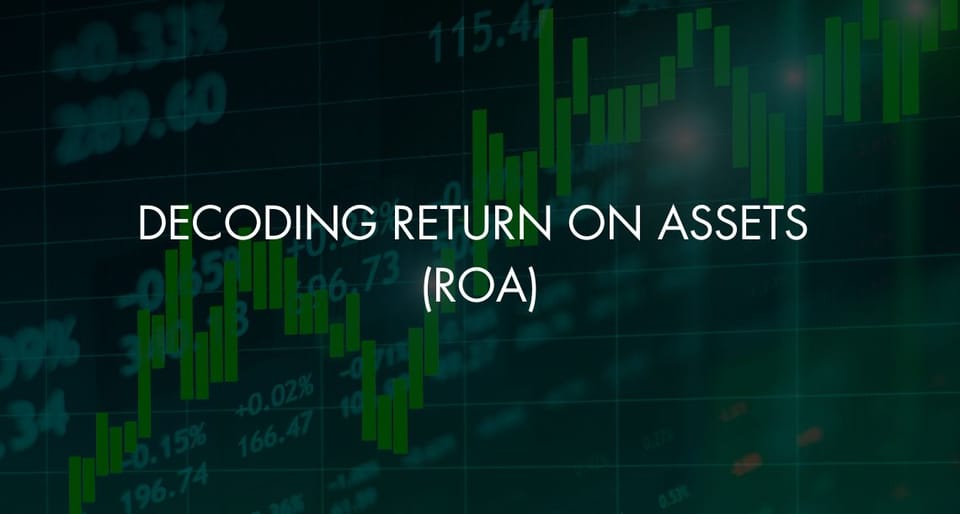Decoding Return on Assets (ROA): A Key Indicator of Asset Efficiency

Return on Assets (ROA) is a fundamental metric that evaluates how effectively a company utilizes its assets to generate earnings. It is a crucial indicator for investors and analysts looking to understand a company's operational efficiency in using its assets to produce profits.
The Importance of ROA
- Efficiency Indicator: ROA shows how capable a company is at converting the money it invests in assets into profit. This is particularly useful for assessing companies that require significant physical assets to operate.
- Comparative Tool: Investors use ROA to compare the operational efficiency of similar companies. A higher ROA indicates a more efficient use of assets.
- Performance Measure: By revealing how much profit a company generates for each unit of asset, ROA provides a snapshot of managerial effectiveness.
Analyzing ROA in Business
ROA can be especially revealing when tracked over time as part of a trend analysis. Consistent improvement in ROA indicates effective management and operational improvements, while declining ROA may suggest operational difficulties or increased asset costs that are not being offset by adequate revenues.
Limitations of ROA
- Capital Intensity: The usefulness of ROA can vary by industry. Companies in capital-intensive industries like manufacturing or utilities might naturally have lower ROA than tech companies or service-oriented businesses that require fewer physical assets.
- Depreciation Policies: Differences in depreciation methods can affect the calculation of total assets, thus impacting the ROA ratio.
- One-Time Items: The presence of one-time gains or losses can skew net income figures, thus distorting the ROA ratio.
Return on Assets is a powerful tool for analyzing a company's ability to generate profit from its assets. It provides crucial insights into how effectively a company's management is using its assets to produce earnings. For investors, understanding ROA in the context of industry norms and alongside other financial metrics can provide a clearer picture of a company’s operational success and investment potential. However, like all metrics, it should be used judiciously and in combination with a broader financial analysis to make informed investment decisions.
FAQs
Q1: What is a good ROA value?
A1: A "good" ROA value depends on the industry. Generally, an ROA higher than the industry average suggests efficient asset use, but this can vary widely across different sectors.
Q2: How can companies improve their ROA?
A2: Companies can improve ROA by increasing operational efficiency, reducing unnecessary asset purchases, or enhancing revenue streams without proportionally increasing asset bases.
Q3: Is ROA useful for all types of companies?
A3: While ROA is a valuable metric for many industries, it has limited utility in sectors where assets do not play a central role in daily operations, such as consultancy firms or investment companies.
Q4: How does ROA compare to other financial metrics?
A4: ROA is best used in conjunction with other metrics like Return on Equity (ROE) and Return on Invested Capital (ROIC) to get a comprehensive view of a company's financial health.
Q5: Does a high ROA always mean a company is a good investment?
A5: Not necessarily. A high ROA is a positive sign, but it must be evaluated alongside market conditions, competition, future growth potential, and other financial metrics.






Member discussion